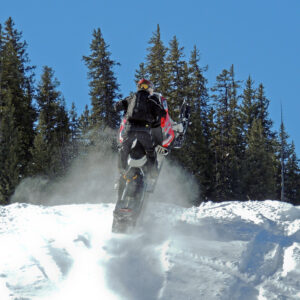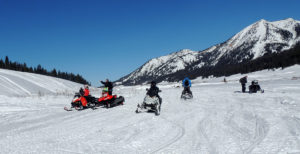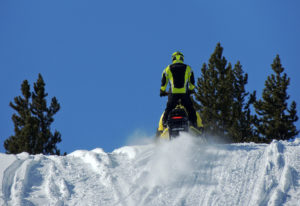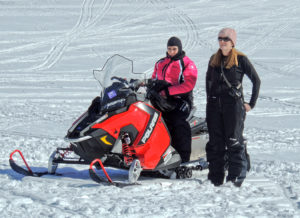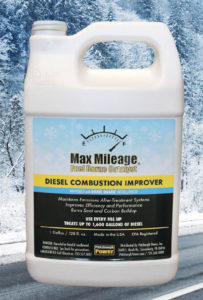Winter brings extra challenges for truck owners with DEF (Diesel Exhaust Fluid) equipped trucks. DEF needs to be at a certain temperature in order to vaporize properly into the exhaust stream. The temperature in the tank, lines, and injector are controlled by either the aftertreatment control module (ACM) or engine control module (ECM). Every system is a little different, but usually the engine’s coolant is used to warm the DEF. While the engine is running, the control system uses valves and pumps to circulate coolant throughout the various aftertreatment components.
Typically, coolant flows from the back of the engine to a control valve. This valve regulates coolant flow from the engine to thaw and maintain temperatures above DEF’s freezing point of 12 degrees Fahrenheit. A pump returns coolant back to the engine after circulating through the DEF tank. If the tank is partially frozen or completely frozen, the control system will enter a routine to protect the dosing system and thaw the fluid. During this routine, DEF injection could be shut off. Line heaters, if equipped, are activated, and coolant flows so DEF can return to a liquid state. The system will automatically monitor temperatures and reinstate the warm-up routine, if necessary. Any issues with the pump, valves, line heaters, etc. could paralyze the truck and should be addressed immediately.
Our Winter Blend Max Mileage Fuel Borne Catalyst is good up to 30 below zero (if the fuel in the truck is a northern blended fuel). Southern fuel may not be treated, and if you fill up in the south and drive north, put the Max Mileage Winter Blend in the fuel and you are good to 15 degrees below zero. Now, if you are just passing through the extreme cold and the truck is going to stay running, you’re okay. The problem arises when the engine is shut off for extended periods of time. Just be cautious – when filling your fuel tanks in the south and traveling north, put the winter blend in the tank during that fill up. It would be best to purchase northern fuel, put in the Winter Blend, and be covered to 30 below zero, but you gotta do what you gotta do.
The majority of trucks out there do not have an APU (Auxiliary Power Unit), but these units can be a life saver – and the Max Mileage product will make your APU run quieter and more efficiently. It also can be very helpful in Espar and Wabasto bunk heaters, as Max Mileage removes all the soot from inside their firing chamber. The Max Mileage Fuel Borne Catalyst will also help your engine if you do not have an APU and need to idle. But idling for long periods of time in the bitter cold is still hard on the DPF (Diesel Particulate Filter). Oftentimes, there is not enough heat in the engine, and you may have to do a re-gen in the morning after a long night of idling in the cold.
Pittsburgh Power’s Owner Operator Snowmobile Conference is being held the first weekend in March. I will be arriving late in the afternoon on Wednesday, March 2nd, at the Lava Mountain Lodge in Dubois, Wyoming. The lodge is located at 3577 Highway 26, zip code 82513. Terry is our contact there, so please ask for him if you are making reservations. The lodge’s phone number is 440-478-4350. We will be staying until Sunday morning, March 6th. Also, please call Cathy, our receptionist at Pittsburgh Power, at 724-360-4080 and let her know if you plan to attend. We normally ride three days, but you are welcome to extend your stay. There are plenty of trails, so if you have a short track Eastern sled, you will be fine. This is our 17th year having the Owner Operator Snowmobile Conference, and we always have a great time riding, eating, having a few drinks, and talking about snowmobiles and big trucks with fellow owner operators.
Our next project truck is being built by John Newby of Whitehall, Montana. John owns a 379 Peterbilt powered by a C-16 Caterpillar engine. The transmission is an 18-speed, which is followed by a 4-speed Spicer auxiliary transmission, so he has a total of 72 gears to choose from, and the rear gears are 3.55 ratio. The Pete is equipped with 8” stacks going 13’-6” into the air. The truck is a 4-axle unit with a 318” wheelbase. John has several trailers he pulls, and some have four axles, giving him eight axles on the ground. John runs from Montana to the state of Washington, so his truck works very hard using 17 to 20 pounds of turbo boost on the level when empty.
John’s gross weight is 109,000 pounds on average, and his fuel mileage average is 4.56 miles per gallon. John is mechanically inclined and will be doing the work, while Pittsburgh Power will be supplying the parts and consulting with John as we work together to try and improve his fuel mileage by 2 miles per gallon. The first change is to shorten the stacks, then install the Pittsburgh Power “shorty” straight-through muffler, our ported and ceramic coated exhaust manifold, and the HP2 performance Caterpillar turbocharger. If we can get the turbo boost to 11 or 12 psi on the level, the fuel mileage will improve by 1 mile per gallon. Then, we will talk about removing the auxiliary transmission and changing the rear gears to a 2.64 or 2.47 ratio to be able to drive the 18-speed in direct gear, which is 16th gear. He also plans to install a FASS Fuel System in the future, along with custom tuning the ECM for performance and economy. Next month we will have more information as to the progress of this project.


